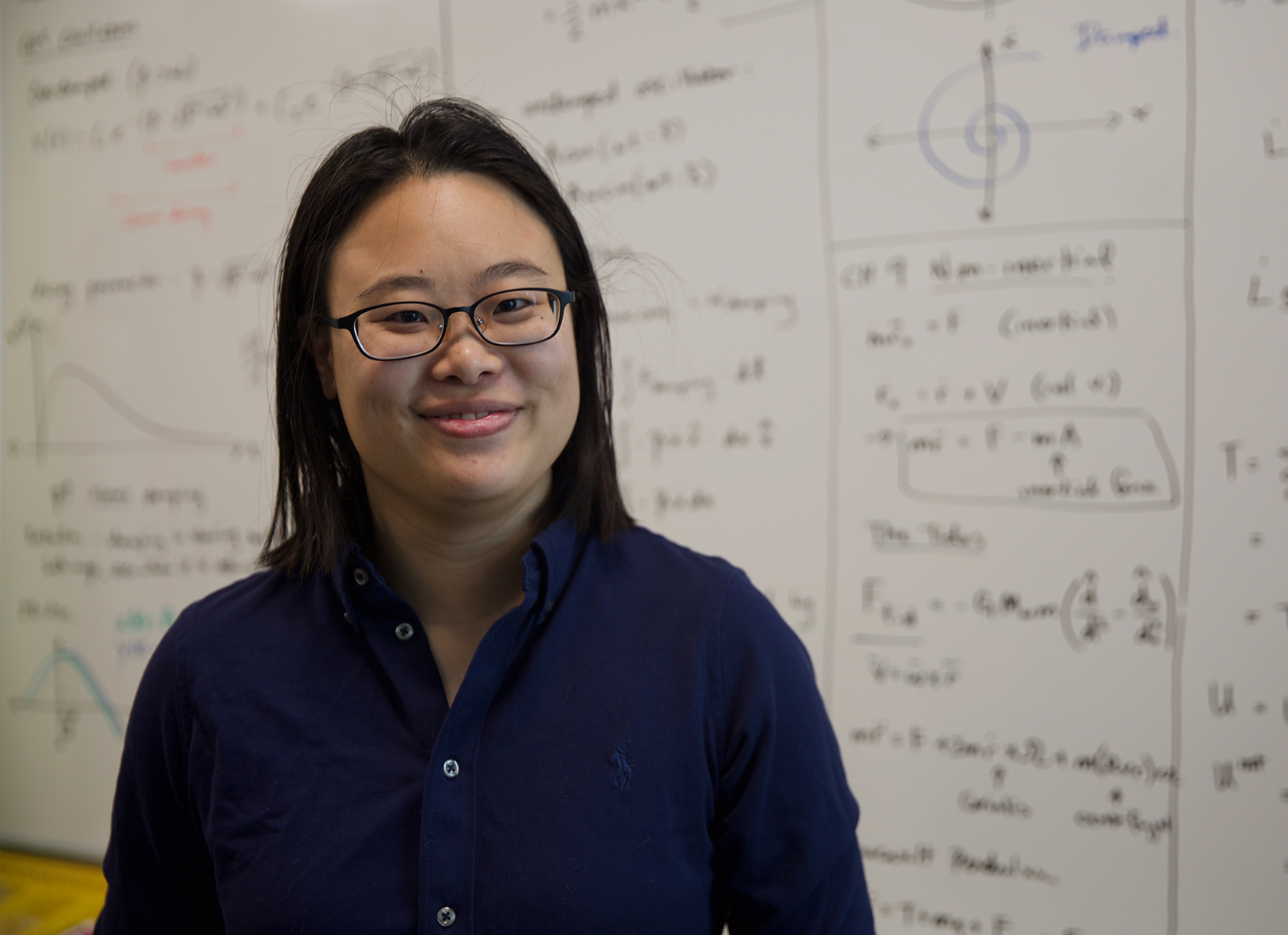
W.M. Keck Science Department Assistant Professor of Physics Janet Sheung has received a three-year National Science Foundation (NSF) grant to advance understanding of the intracellular transport process, which can lead to more effective drug delivery systems. The $589,597 grant will also provide funding for Sheung to mentor Scripps College Academy (SCA) Scholars, students from an intensive, multi-year pre-college program for high-achieving young women who seek to become the first in their families to attend college.
In order to sustain the critical cellular functions that keep us alive, various molecules are constantly transported across each cell. Because cells are 70 percent water, physicists have theorized that this process is similar to the way molecules in a drop of ink will travel across a glass of water over time.
“We all know from experience that if we are patient and wait, eventually the ink will diffuse throughout the glass and all the fluid will be a uniform color,” Sheung said. “However, when we put cells under microscopes and actually watch them, the transport we see does not match the predictions of our theories. This is because the inside of a cell is a very dense mesh that is not in equilibrium—and both of these factors break fundamental assumptions made in physics.”
One major technical challenge that scientists face in advancing their knowledge of cellular transport is the complexity of the cell itself. Researchers are able to directly control only a very few of the many variables inside of a living cell, which makes it difficult to draw conclusions based on experimental outcomes.
“One fundamental tenet of experimental science is that we cannot conclude that A causes B just by showing that when we add A, B happens,” Sheung said. “We must also show that in the absence of A, B does not happen—while no other factors also change.”
To bypass this technical challenge, Sheung and her team of undergraduate researchers will build a first-of-its-kind instrument optimized to work with a specific kind of sample. The team will leverage off-the-shelf proteins purified from cells, which they will then reassemble in Sheung’s lab to form minimal cellular environments on microscope slides. These reassembled proteins—which basically function as “toy models” of cells—will reduce the number of variables that need to be accounted for when drawing firm conclusions from cellular transport experiments. “This will allow us to tackle previously intractable questions,” Sheung said.
With the grant’s support, Sheung will also host a group of SCA scholars each year, providing them with hands-on, interdisciplinary research experience in the areas of biophysics and biomaterials and introducing them to undergraduate majors in the fields of science, technology, engineering and mathematics (STEM). Sheung said this type of proactive outreach is an invaluable method of increasing diversity in STEM disciplines, where inequities in career access begin long before students reach college.
“Twenty years on and three physics degrees later, I still remember how, primarily raised in a household with no high school graduates, my mental concept of a scientist amounted to little more than its dictionary definition,” Sheung said, adding that for her, one six-week experience at Lawrence Berkeley National Laboratory changed “what was once just an abstract concept—someone who does science—into a career aspiration.” Sheung hopes that her role as a faculty volunteer in the SCA program will provide the same “trajectory-altering opportunity” to future generations of students and foster their self-perception as scientists.

